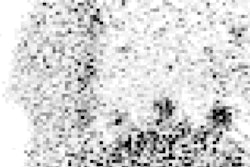Dear CT Insider,
Peritoneal metastases are common in patients with gastrointestinal tract cancers, peritoneal mesothelioma, and genitourinary cancers, and when they develop, patient mortality nearly always results from disease progression in the abdominal cavity. They represent a serious diagnostic challenge, even for experienced radiologists.
CT has an essential role to play in the management of these cases, so it's no surprise that award-winning Spanish work in this area is proving popular. They have some practical and timely advice, and you can get it here.
French researchers have reported their findings from what they believe is the first study to look at iodine concentration using dual-energy CT in patients with cardiac amyloidosis and to distinguish them from other cases of hypertrophy. The prospective study included 22 patients with cardiac amyloidosis, 13 patients with nonamyloid cardiomyopathies other causes of hypertrophy, and 10 control subjects. Click here to find out more.
To help identify CT examinations with critical findings, a new automated artificial intelligence screening tool is available. The developers expect rapid adoption of this machine-learning technology is anticipated, with further expansion of the methodology to improve decisions and workflow in radiology in order to streamline the processes. To learn more, click here.
Also, a machine-learning algorithm slightly has outperformed a more traditional algorithm in analyzing fractional flow reserve CT studies for detecting signs of ischemic coronary lesions. Get the details here.
Meanwhile, a group from Italy has joined up with Japanese and U.S. colleagues to participate in a new study on CT colonography. The group's technique reportedly outperformed two conventional methods, producing far fewer artifacts that have complicated efforts to create an easier colon cancer screening exam. Click here for the full story.
This letter highlights just a few of the many articles posted in the CT Community. For the full list, please check out the lineup below.



















